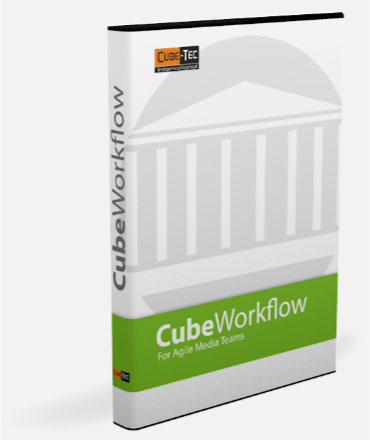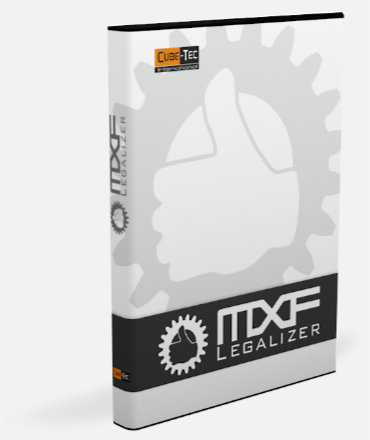
MXF•Legalizer
Does it happen in your organization that you get MXF files delivered that do not work as you expect? Do you have to maintain a large archive with a diversity of MXF flavours and need to make sure that all files in your archive will still work fine in a few years and after updating your equipment? Are you uncertain about how to leverage MXF throughout your facility workflows? MXF Legalizer is designed to solve your compliance issues and will foster MXF interoperability throughout your workplace. Full automatic and in High-speed!
The MXF•Legalizer is a fully integrated component of CubeWorkflow, but is also available stand-alone with a webservice and a watchfolder interface.

MXF Compliance for Standard Conformity
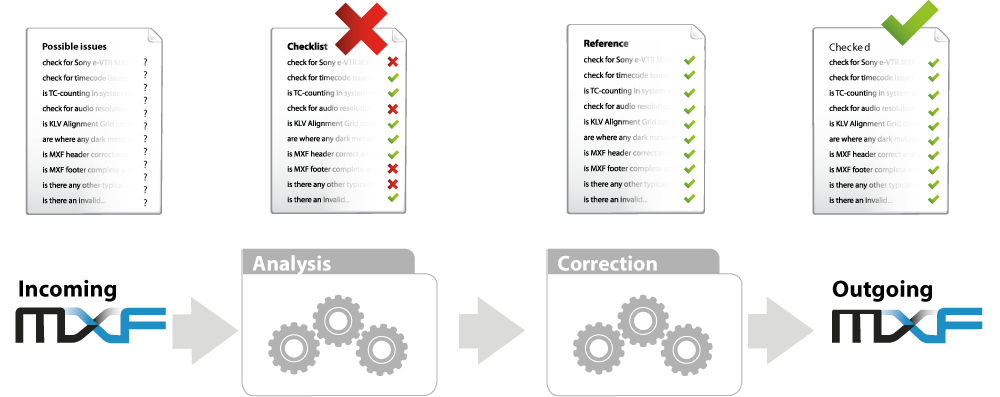
What are the reasons for compatibility issues with MXF?
With the manifold of potential sources for risks and the diversity of incompatibility issues there is only one straight-forward strategy. You need an MXF "gateway" which automatic corrects and reformats these diverse format variants into a full standard compliant format.
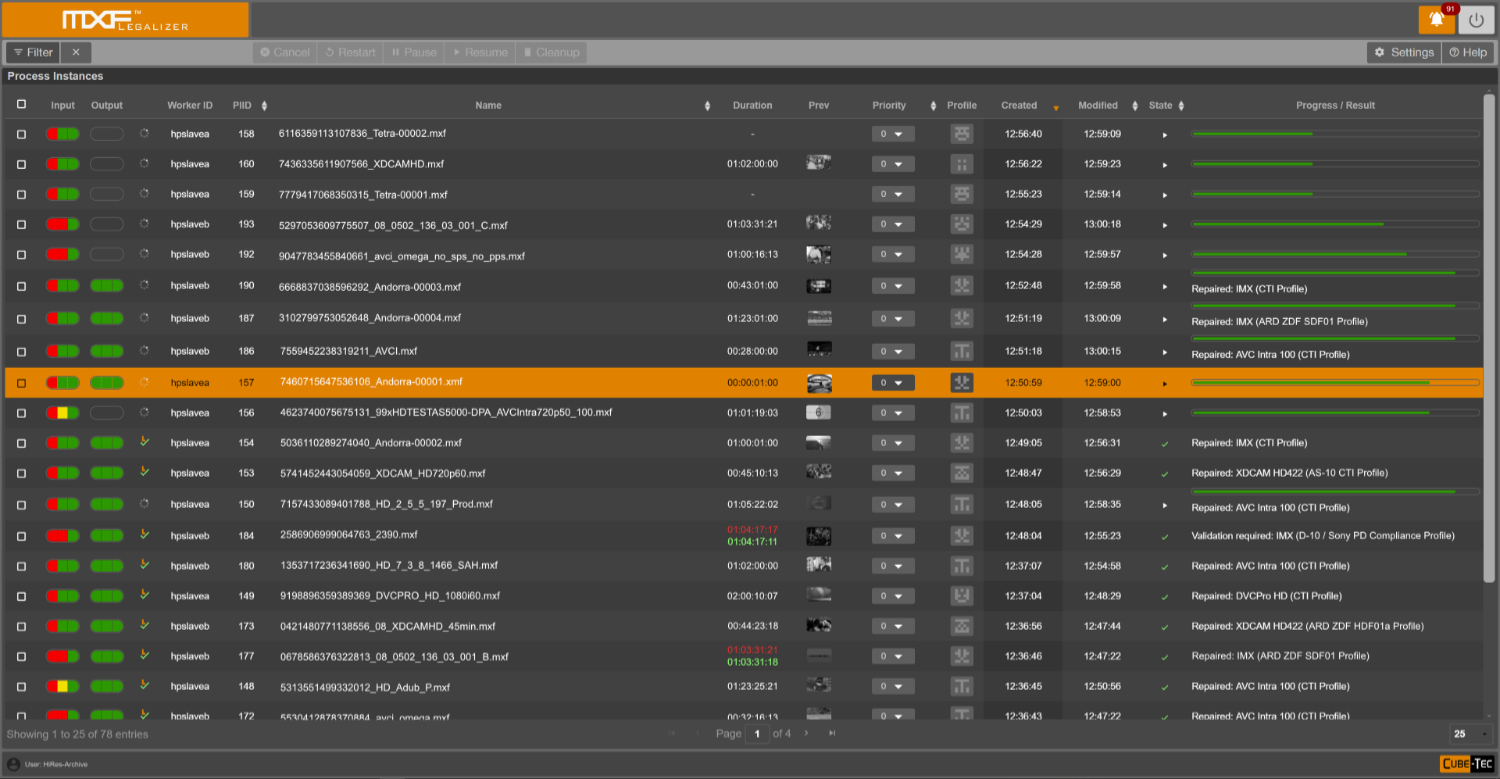
Extract only the essence and metadata which give value to your processes and secure that no uncertain or doubtful and potential risky data come through this barrier. This provides lean and low complexity files all with the exact same structure, as they are produced by the same mechanisms. This will minimize the format complexity and risk! There exist more than 50 standard documents to define all the specified variants of the MXF format. MXF initially has been developed as a complementary format to the Advanced Authoring Format (AAF). Technically, MXF applies as a subset of AAF and is designed to serve all interchange requirements a professional user can have with a file-based media container format. SMPTE accepted the wish of different media companies to get their proprietary formats included within the MXF family of standards. And of course the scope of requirements has broadened over the last decade from a pure video tape replacement format to the full diversity of a file- and stream-based utilization.
MXF Legalizer extensions:
- Loudness Correction (in conformance to current ITU and EBU recommendations)
- Dolby E to plain PCM conversion (still under development)
This means:
- the standard is designed to be highly flexible, which results in high complexity
- there is a significant degree of freedom in the standards documents resulting in differences in implementation details
- due to MXF complexity, only subsets of the standards are implemented by the different industry partners
- undefined or unclear details within the standards documents led to different interpretations and implementations
- there are interoperability issues on the wrapper, the encoder, the essence or the metadata level
- format describing metadata can be stored on different locations within the MXF file; this can result in contradictory information that is interpreted differently by different vendors
- in some cases, files cannot be used at all or even crash systems
MXF Legalizer enables standard compliance and interoperability – today!
Solutions for MXF Loudness Issues
Cube-Tec International provides three different approaches for your file-based loudness requirements. Each one is optimized for a separate use-case within your business workflow.
Loudness correction for outgoing MXF files
- The loudness correction gain is calculated and provided as metadata for controlling the audio level within the play-out-system.
- It is also possible to force high-speed in-place overwriting of MXF audio tracks with loudness corrected audio data.
See Cube-Tec's MXF Loudness Assimilator for more details.
Loudness correction for incoming MXF files
The MXF Legalizer firewall approach: Analysis of the MXF file structure, calculation of file-based loudness adaption value and re-creation of a welldefined MXF file in a fully compliant format with corrected audio tracks but without touching the video essence itself.
This performance-optimized two-in-one step approach is the best way to achieve a homogenous collection with minimized risk of MXF interoperability issues for future use.
Practical workflow examples with loudness correction
During IBC and NAB, Cube-Tec demonstrated at the EBU/AMWA booth automated loudness normalization that adheres to EBU R 128 (ITU-R BS.1770-2) and ATSC A/85 which is especially important to North American broadcasters dealing with CALM Act challenges.
Specifics and Options
The AMWA develops application specifications (AS) designed for the operational requirements of specific parts of media workflows. Each AS is a constrained version of MXF and is intended to facilitate interoperability between the components and processes in the workflow.

The AMWA specifications:
- AS-02 MXF for Program Versioning
- AS-03 MXF for Delivery
- AS-10 MXF for Production
- AS-11 MXF for Contribution
AMWA AS-02 supports storage and movement of MXF program components to enable multiple versions and inventories for use in a multi-lingual, multi-delivery media environment.
AMWA AS-03 provides MXF optimized for program delivery and is intended for direct playout from a videoserver.
AMWA AS-10 proposes to detail a constrained MXF OP1a file format to enable interoperation with long GOP encoded video. AS-10 builds on the SMPTE RDD 9. The MXF interoperability specification of Sony MPEG Long GOP products.
AMWA AS-11 specifies a vendor-neutral subset of the MXF file format to use for delivery of finished programming from program producers and program distributors to broadcast stations. AS-11 includes the functionality of AS-03 and extends it to include high definition AVC-Intra and includes explicit support for standard definition D-10 video with AES3 audio (compliant with SMPTE ST 386).
Typical broadcast formats for clean up
HD format:
- MXF
- XDCAM
- HD422
- RDD9
- MPEG2
- Long GOP
- 25/50 fps mit 8x PCM 24 bit 48kHz
SD format:
- MXF
- OP1a
- IMX/D10
- RDD3
- MPEG2
- 1 - 8 PCM Audio Kanäle in einem AES8 Block
MXF Legalizer is a fully integrated component of CubeWorkflow, but is also available stand-alone with a webservice and a watchfolder interface. A single license is valid for one server, independent of the number of cores. MXF Legalizer uses a hi-speed multi-threaded check-and-rewrite algorithm, to provide compliance for standard conformity and beyond! MXF Legalizer secures conformity with client specific format constrains to increase compatibility.
25/50fps with 8x mono PCM 24 bit 48 kHz SD format: MXF OP1a, IMX/D-10, 50/40/30Mbit/s MPEG2 I-frame only (PAL, 25fps), 1 to 8 PCM audio channels in one AES8 block
What Are The Solutions For Better Interoperability With MXF?
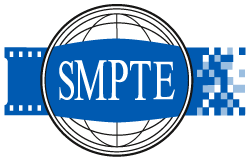
As a SMPTE member Cube-Tec International is consequently working within the standards development process. Cube-Tec supports the development of Application Specifications as an AMWA member and also works at the Expert Communities at EBU level to improve the situation. But for ad-hoc needs, Cube-Tec has developed the MXF Legalizer.
Here are some practical strategies and recommendations to minimize incompatibility issues within MXF files:
- move to highly restricted use-case definition like the AMWA MXF Application Specifications (see AMWA MXF box page 3)
- use constraints of the SMPTE Interoperability Specification in the Registered Disclosure Documents
- use in-house restriction to clearly define MXF format constraints
- only use tools based on well tested and widely used MXF libraries
- foster and support regular Plug-Fests for checking and documenting compliance issues
- use file-based QC engines to report incompatibilities early in the workflow
- report analysed issues to SMPTE and EBU
Fix potential dangerous format variants
Depending on your in-house rules, you can convert potential dangerous format variants like:
- known Sony e-VTR MXF issues
- convert midnight TC Wrap 24:00:00/00 to 00:00:00/00
- force conversion of 20 bit resolution audio to 24 bit
- ignore Audio Channel Valid Flag
- unclosed or incomplete MXF files
- not aligned to typical KLV Alignment Grid size of 512
- wrong/missing TC-counting in system element
- MXF-header/footer issues TM
Practical steps
The following steps are suggestions for a convenient and easy workflow within MXF files.
The steps:
- provide your in-house policy for what is needed and what is wasteful and potentially risky
- unwrap the incoming MXF
- extract the essence and metadata
- generate a fresh MXF wrapper
- fill in the (modified) essences
- fill up only metadata your application really needs and put them on its one exact position in the MXF format
MXF Loudness Assimilator
Do you have to provide MXF files which have to be compliant with the new loudness normalisation standards? Are you looking for a tool to easily integrate in your existing workflow, doing the necessary processing highly reliably and in high-speed?
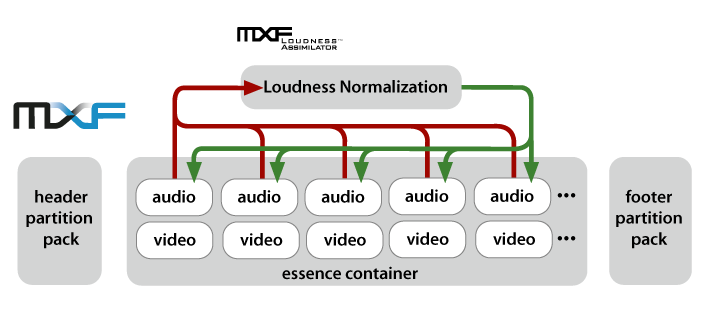
For this purpose, Cube-Tec developed the MXF Loudness Assimilator. It is available as an easy to integrate standalone webservice (SOAP) with an optional watchfolder interface.
The MXF Loudness Assimilator does not touch the video essence or anything else in the MXF container, only for the audio essence. So it's not going to change or modify your file's MXF structure (something to be very careful about!) – only the contents of the audio essence gets loudness normalized in high-speed.
Alternatively, the necessary correction gain can also be added as metadata without altering the audio essence. Thus, loudness adaption may be implemented in the play-out-system.
Read more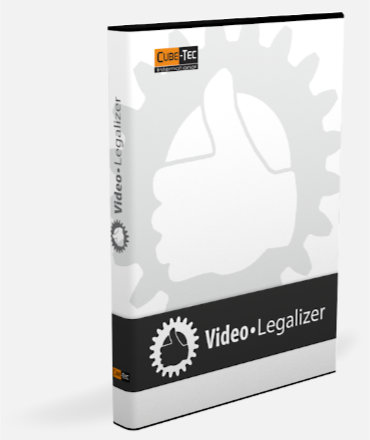
Video•Legalizer
Video•Legalizer is an optional module within MXF•Legalizer as well as IMF•Legalizer to detect and correct illegal video levels. The correction is done with a sophisticated algorithm and conform to the selected broadcast format standard.
To adapt and correct audio levels to be standard compliant with delivery specifications like EBU R128, ITU-R BS.1770 and ATSC A/85, there is the Loudness Assimilator Module option. To conform with other aspects of video delivery specifications further regarding audio, video and metadata requirements our Legalizer solutions follows the rules of EBU.IO QC Templates.
Read more



